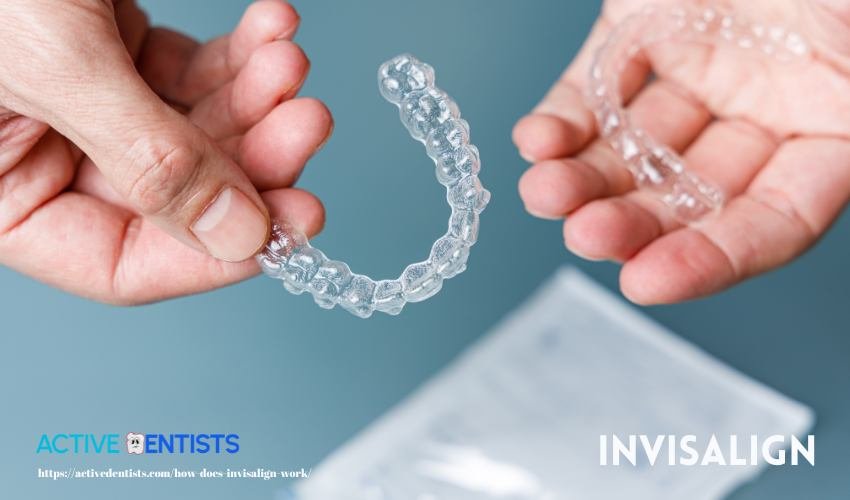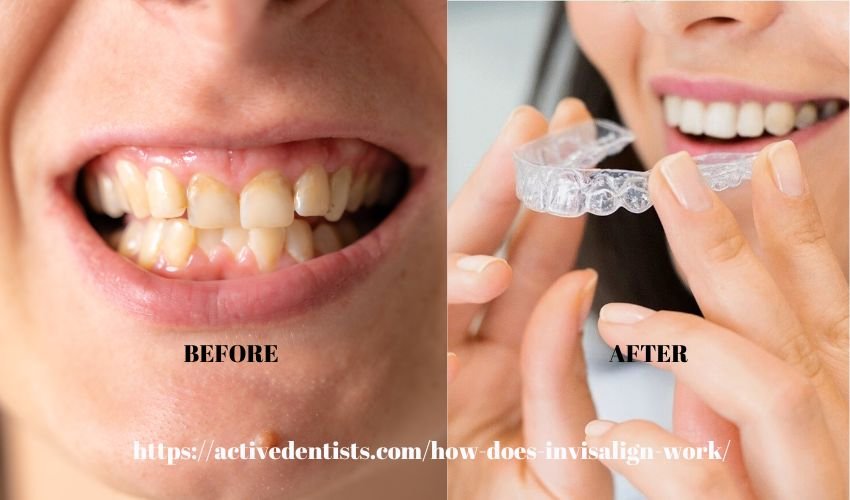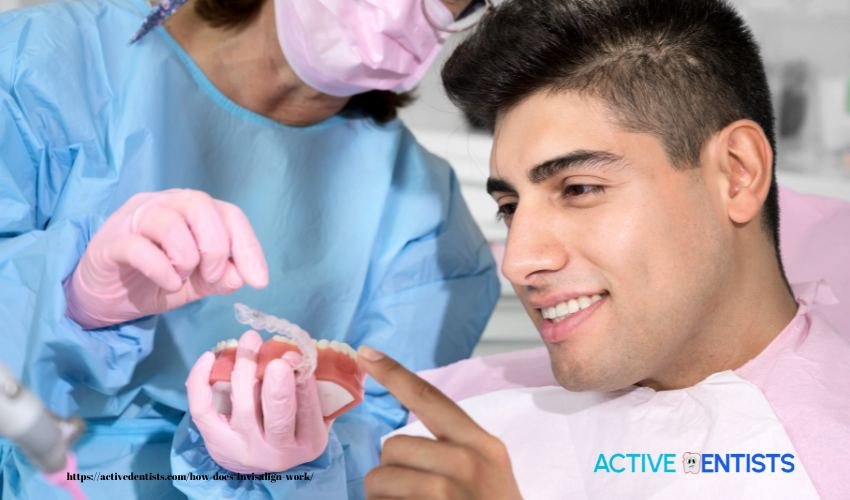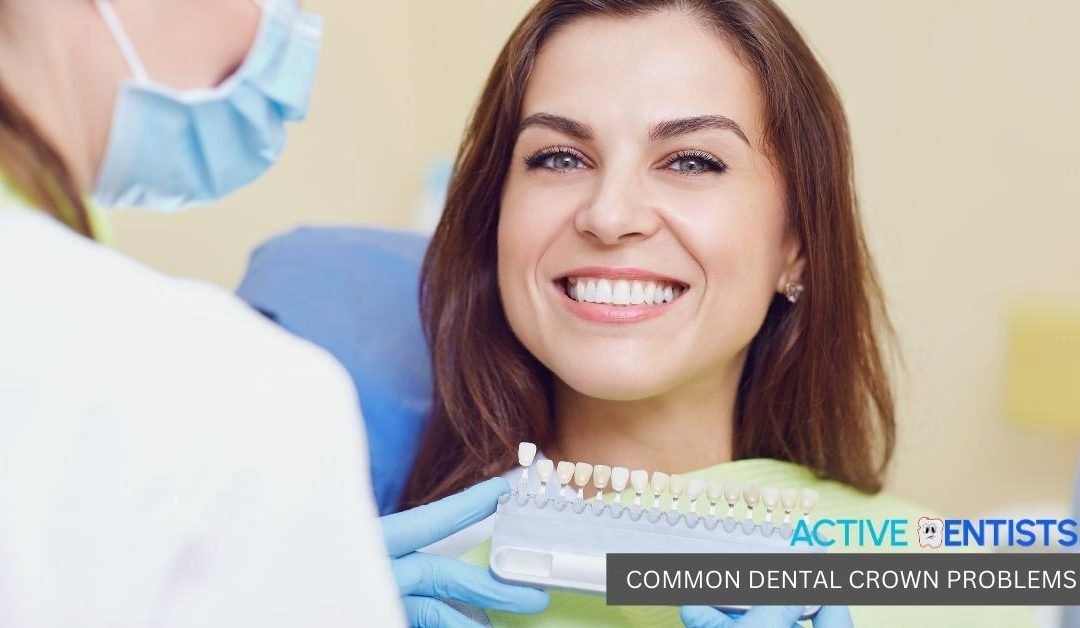Invisalign A Choice for Orthodontic Treatment
In the dynamic world of orthodontics, technology is constantly advancing and revolutionizing the way we approach dental alignment. One innovation that has dramatically changed orthodontic treatments is Invisalign. Invisalign treatment can produce remarkable before-and-after transformations, leading to improved dental alignment and a more confident smile. In this blog, we will discuss what is invisalign, how it works, cost of invisalign, Invisalign Before and After and some recommedation.

More About Invisalign
Invisalign can treat a wide range of orthodontic issues, including overcrowding, gaps, underbites, overbites, and crossbites. Whether you have a slight misalignment or more complex issues, Invisalign might be a suitable option for you. Invisalign is a form of clear aligner treatment that uses a series of virtually invisible, removable aligners that are custom-made for each patient. The aligners gradually and gently shift teeth into their correct positions over time, based on the precise treatment plan devised by the orthodontist. In this blog we will discuss about invisalign in detail, how it work and indeed cost of Invisalign will come into consideration.
The out-of-pocket cost for Invisalign can be significantly influenced by your dental insurance coverage. Some insurance policies include coverage for orthodontic treatments like Invisalign, which can help reduce your personal expenditure. The cost of Invisalign can also depend on your location. If you live in a city with a higher cost of living, you might find that Invisalign prices are steeper. Furthermore, the expertise of your orthodontist can impact costs. Specialists with more experience and a focus on Invisalign treatment may have higher fees for their services.

Invisalign and Other Alternative Treatments Option
Invisalign is a popular choice when it comes to straightening teeth, but it’s not the only option out there. Each of these options comes with its own set of benefits and drawbacks in terms of cost, duration of treatment, effectiveness, and how they look. The best choice will depend on your unique situation and goals. That’s why it’s important to have a good chat with your orthodontist, who can provide a personalized recommendation after a comprehensive evaluation.
Let’s take a quick look at some alternatives:
Traditional Metal Braces: These are the ones you’re probably most familiar with – they’ve been around for ages. Metal braces are quite effective and also tend to be the most affordable option. However, they’re the most visible option too.
Ceramic Braces: These work the same way metal braces do, but they’re made of clear or tooth-colored ceramic, making them a bit more subtle. They do come with a higher price tag, though.
Lingual Braces: Now, these are interesting. Lingual braces are like traditional braces, but they’re attached to the back of your teeth, making them completely hidden from view. But this comes with some challenges; they can be harder to clean, and they’re usually more expensive.
Clear Aligners: Brands like ClearCorrect, SmileDirectClub, and Byte also offer clear aligners that work similarly to Invisalign. Some of these brands even allow you to undergo treatment from home, although this might not be the best choice for more complicated cases.
Self-Ligating Braces: This type of braces, like Damon Braces, work like regular braces but without the need for elastics. They use special brackets that automatically adjust as needed. These braces can be more comfortable and may need fewer adjustments.
Orthodontic Appliances: Other options such as removable retainers, fixed retainers, and palatal expanders can be used for certain cases, either by themselves or along with braces or aligners.
Dentist and Orthodontist
Dentists are like the jack-of-all-trades in oral health care. They take care of a variety of dental needs, from the basic stuff like cleanings and fillings, to diagnosing gum diseases and decay, and even brightening up your smile with teeth whitening. Some dentists also dip their toes into orthodontic treatments, but usually just for straightforward cases.
On the flip side, orthodontists are more like specialists. They’ve trained specifically to diagnose and treat irregularities in your teeth and facial structure. Their main gig is aligning teeth, fixing bites, and getting your jaw to line up just right. If you’ve got serious overcrowding, major gaps, underbites, overbites, crossbites, or a condition that needs jaw surgery, an orthodontist is your go-to expert. They’re equipped to handle complex cases that require a specialized touch.
Patients prefer Invisalign
Orthodontists recommend Invisalign, and patients prefer it for several reasons:
Stealthy Aesthetics: Invisalign’s biggest draw is its almost invisible nature. Clear plastic aligners replace the traditional metallic setup, making it less noticeable and a popular choice among adults and teenagers who might be self-conscious about their appearance.
Comfort Factor: With Invisalign, you won’t be dealing with uncomfortable metal brackets or wires. The aligners are smooth and designed to fit comfortably in your mouth.
Convenience: The removable nature of Invisalign aligners is a game-changer. You can take them out when eating, brushing, or flossing, making oral hygiene maintenance easier. Plus, there’s no need to worry about food restrictions often associated with traditional braces.
Precision: Invisalign takes advantage of advanced 3D imaging technology. This allows orthodontists to accurately predict your teeth’s movement and give you a sneak peek of the end results even before your treatment starts.

Patients prefer Invisalign
Orthodontists recommend Invisalign, and patients prefer it for several reasons, subject to Invisalign cost:
Stealthy Aesthetics: Invisalign’s biggest draw is its almost invisible nature. Clear plastic aligners replace the traditional metallic setup, making it less noticeable and a popular choice among adults and teenagers who might be self-conscious about their appearance.
Comfort Factor: With Invisalign, you won’t be dealing with uncomfortable metal brackets or wires. The aligners are smooth and designed to fit comfortably in your mouth.
Convenience: The removable nature of Invisalign aligners is a game-changer. You can take them out when eating, brushing, or flossing, making oral hygiene maintenance easier. Plus, there’s no need to worry about food restrictions often associated with traditional braces.
Precision: Invisalign takes advantage of advanced 3D imaging technology. This allows orthodontists to accurately predict your teeth’s movement and give you a sneak peek of the end results even before your treatment starts.

How Invisalign Works
How exactly does the Invisalign system work? Let’s delve into the process.
Step 1: Consultation and Evaluation An orthodontist experienced in Invisalign checks if the system is a good fit for your teeth and dental goals.
Step 2: Crafting a Custom Plan, subject to acceptance of cost invisalign, if you’re eligible, the orthodontist uses advanced 3D technology to scan your teeth, mapping out a detailed treatment plan for your smile transformation.
Step 3: Production of Your Aligners Based on your plan, a series of custom-fit aligners is made using a virtually invisible, patented thermoplastic material known as SmartTrack.
Step 4: Wearing Your Aligners Each set of aligners is worn for about 1-2 weeks. You take them off for eating, drinking, and oral hygiene. As you progress through the aligner series, your teeth shift gradually until they reach the desired position.
Step 5: Regular Monitoring You’ll have periodic check-ups, usually every 6-8 weeks, to track your progress.
Step 6: Maintaining Your Smile After treatment, you’ll likely wear a clear retainer similar to the aligners to keep your teeth in their new positions.
Cost of Invisalign treatment
Invisalign treatment costs in the US generally fall between $3,000 and $8,000. For comparison, the price tag for traditional braces often lies between $2,000 and $6,000, although this can fluctuate. It’s always advisable to check with your dentist or orthodontist for a precise quote tailored to your specific requirements. The severity of your orthodontic issues can significantly impact the cost of your Invisalign treatment. Simple cases requiring fewer aligners may cost less, while complex cases that require more aligners or a longer treatment period can cost more.

Invisalign Before and After
It’s important to note that each individual’s before-and-after results may vary based on their specific orthodontic needs and the duration of treatment. Consulting with an orthodontist and reviewing before-and-after photos of previous Invisalign cases can provide a clearer idea of the potential results for your unique situation. Invisalign treatment can bring remarkable transformations, improving dental alignment and boosting confidence. It straightens teeth, reducing crowding and gaps, and corrects bite issues like overbites and underbites. The aesthetic benefits result in a more harmonious smile, enhancing overall appearance. The positive impact on self-esteem and confidence can be significant, making individuals feel more at ease in social and professional situations.
Measures Should Be Taken
using Invisalign effectively involves a few key practices. Firstly, it’s crucial to wear your aligners for 20-22 hours daily, only removing them for meals, drinking non-water beverages, and oral hygiene practices. Maintaining good oral health is essential, and this includes regular brushing and cleaning of your aligners. Avoid habits like chewing gum or using tobacco products while wearing your aligners, as these could cause damage. Always store aligners carefully when not in use, and make sure to follow the specified sequence given by your orthodontist for wearing each aligner.
Last Note
The beauty of Invisalign lies in its effective, comfortable, and nearly invisible approach to creating stunning smiles. Custom-made clear aligners gradually guide your teeth into their desired positions, resulting in a smile you can’t wait to flaunt. Remember, Invisalign is a significant investment in your oral health, so it’s essential to take good care of your aligners and follow your orthodontist’s instructions to get the best results from your treatment.






